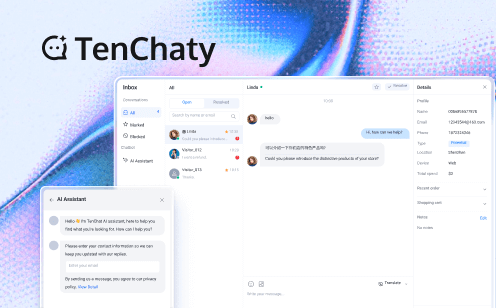
Hundreds of coding software options are available today, ranging from text editors and IDEs to specialized tools for specific languages. Whether you're experienced or new to coding, choosing the right software that fits your needs can help you maximize productivity, streamline workflows, and improve coding efficiency.
In this article, I’ll share 14 of the best coding software options available today, designed to meet different programming needs and preferences. No matter your experience level, you'll find valuable insights here to help you choose the perfect coding tool for your projects.
14 Best Coding Software
I've used various coding software throughout my career, each offering unique benefits and tools. Below I listed 14 of the best coding software options that have significantly enhanced my development workflow.
1. Notepad++
Notepad++ is a free, open-source code editor that has been a favorite among developers for years. It offers a lightweight and fast interface while providing powerful features for coding and text editing. It is also optimized for the Windows environment and aims to reduce power consumption by using less CPU power.
Best features:
- Support for multiple programming languages
- Syntax highlighting and code folding
- Auto-completion and function hints
- Macro recording and playback
- Split screen editing and tabbed interface
Drawbacks:
- Limited cross-platform support
- Fewer advanced features compared to full-fledged IDEs
2. Sublime Text
Sublime Text is known for its user-friendly interface and powerful features. It supports multiple programming languages and can be extensively customized with plugins. You can also use Sublime Text to integrate advanced functionalities like high-quality audio/video calls and interactive live streaming into your applications using cloud-based services, such as Tencent RTC.
Best features:
- Multiple selections for simultaneous editing
- Command palette for quick access to features
- Powerful API and package ecosystem
- Distraction-free writing mode
- Customizable key bindings and macros
Drawbacks:
- Many advanced features require a paid license
- Has a steep learning curve for beginners
3. VIM
Vim is a very customizable text editor designed to facilitate effective text editing. It supports a large number of programming languages and comes pre-installed as "vi" on the majority of UNIX systems.
Best features:
- Modal editing for efficient text manipulation
- Extensive plugin ecosystem
- Customizable through scripting
- Support for hundreds of programming languages
- Powerful search and replace functionality
Drawbacks:
- Steep learning curve
- Lack of a graphical user interface
4. Visual Studio Code
Visual Studio Code is a free, open-source code editor developed by Microsoft. It is optimized for building and debugging modern web and cloud applications. VS Code's versatility and strong community support make it a top choice for many developers across different programming languages and platforms.
Best features:
- IntelliSense for smart completions
- Debugging support for multiple languages
- Built-in Git integration
- Extensive marketplace for extensions
- Customizable interface and settings
Drawbacks:
- Higher memory usage
- Occasional performance issues with large projects
5. IntelliJ IDEA
IntelliJ IDEA is a comprehensive IDE primarily designed for Java and Kotlin development. It offers intelligent coding assistance and supports a wide range of languages through plugins.
Best features:
- Advanced code assistance and refactoring
- Built-in developer tools and debugger
- Support for web and enterprise development
- Integration with version control systems
- Extensive plugin ecosystem
Drawbacks:
- High memory consumption
- Paid cost of the Ultimate edition
6. UltraEdit
UltraEdit is a versatile text and hex editor known for handling large files with ease. It is also known for its powerful text manipulation capabilities and is suitable for various coding tasks.
Best features:
- Support for large files
- Integrated FTP client
- Column/block editing and multi-caret editing
- Syntax highlighting for numerous languages
- Customizable interface and themes
Drawbacks:
- Paid cost
- Somewhat dated user interface
7. Eclipse
Eclipse is a widely used IDE, primarily for Java development, and it supports other languages through plugins. Eclipse's flexibility and extensive plugin ecosystem make it a popular choice for Java developers and those working on large-scale projects.
Best features:
- Robust Java development tools
- Extensible plugin architecture
- Integrated debugging support
- Git integration
- Support for web and enterprise development
Drawbacks:
- Complex
- Sometimes sluggish performance
8. Atom
GitHub created the open-source text editor Atom. It is renowned for its adaptability and wide range of package modification choices. While Atom is no longer actively maintained, its existing features and community-created packages still make it a viable option for some developers.
Best features:
- Highly customizable interface
- Built-in package manager
- Smart auto-completion
- File system browser
- Cross-platform support
Drawbacks:
- Slower performance compared to other editors
- Higher memory usage
9. BBEdit
BBEdit is a professional HTML and text editor for macOS. It is designed for web and software development. BBEdit is particularly popular among Mac users for its robust feature set and long-standing reputation in the Apple ecosystem.
Best features:
- Advanced search and replacement capabilities
- Support for multiple languages and file formats
- Integration with version control systems
- Powerful text manipulation tools
- Extensible through scripting
Drawbacks:
- High-cost
- MacOS exclusivity
10. Nova
Nova is a modern, native code editor for macOS developed by Panic. It is designed to be fast and efficient for web development. Nova is gaining popularity among Mac developers as a sleek, feature-rich alternative to other coding software programs.
Best features:
- Clean, native macOS interface
- Built-in terminal and task running
- Git integration
- Customizable themes and extensions
- Support for multiple languages and frameworks
Drawbacks:
- MacOS exclusivity
- Relatively high cost
11. Emacs
Emacs is a highly customizable text editor with a rich history. It supports a wide range of programming languages and offers extensive customization through Emacs Lisp.
Best features:
- Extensive customization through Emacs Lisp
- Support for a wide range of programming languages
- Integrated development environment capabilities
- Powerful macro system
- Built-in package manager
Drawbacks:
- Steep learning curve
- Complex configuration
12. BlueGriffon
BlueGriffon is a WYSIWYG content editor for the web, based on the rendering engine of Firefox. It is designed for web developers and content creators. BlueGriffon is particularly useful for those who work with web content and prefer a visual editing approach.
Best features:
- Standards-compliant HTML editing
- CSS style sheet creation and editing
- ARIA support for accessibility
- SVG-ready
- Extensions for additional functionality
Drawbacks:
- Limited support for advanced coding features
- Somewhat cluttered interface
13. WeBuilder
WeBuilder, a fast and intelligent all-in-one code editor for web developers, supports multiple languages and integrates tools for validation, formatting, and deployment. It's an excellent choice for web developers seeking a specialized tool to enhance their workflow.
Best features:
- Intelligent code completion
- Built-in validator and debugger
- FTP/SFTP support
- Customizable interface
- Support for various web technologies
Drawbacks:
- Relative high cost
- Limited community support compared to open-source alternatives
14. Gedit
Gedit is a general-purpose text editor for the GNOME desktop environment. It offers a simple and clean user interface with basic coding features. Gedit is a lightweight option for Linux users and it is best for people who prefer a no-frills text editor for coding tasks.
Best features:
- Syntax highlighting for various languages
- Plugins for extended functionality
- Customizable interface
- Support for multiple documents
- Integration with the GNOME environment
Drawbacks:
- Limited advanced features
- Less customization compared to other editors
Conclusion
There is a wealth of excellent coding software available online, offering solutions for every type of developer and project. Some of these tools now integrate AI to assist in coding tasks. When it comes to choosing the best coding software, preferences can vary widely and often come down to personal choice. Personally, I always prioritize tools with a strong community, as they provide invaluable support, resources, and collaborative opportunities for continuous learning and improvement.
FAQs
Who uses coding software?
Coding software is used by professionals like software developers, data scientists, web developers, and information security analysts, as well as students, hobbyists, and system administrators. Its purpose is to create, maintain, and enhance software applications and systems.
What are the benefits of coding software?
Coding software boosts productivity by providing tools like syntax highlighting, code completion, and debugging features that make development easier. It also enhances code quality and teamwork by including integrated version control and error detection capabilities.
What free coding software is there?
Visual Studio Code and Notepad++ are widely used free coding software with powerful features for developers. Other popular free options include Eclipse, ideal for Java development; Atom, known for its customization capabilities; and Python's IDLE, designed specifically for Python programming.
If you have any questions or need assistance online, our support team is always ready to help. Please feel free to Contact us or join us on Telegram or Discord. For technical problems, you can also get help directly from developers on Stack Overflow.


